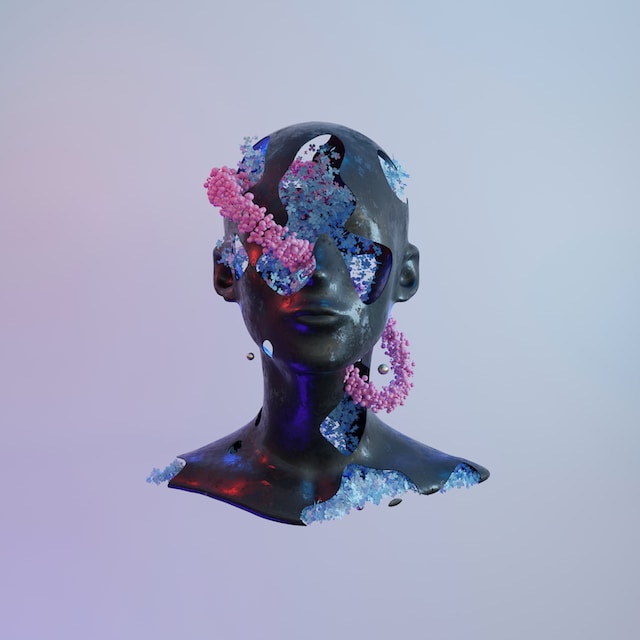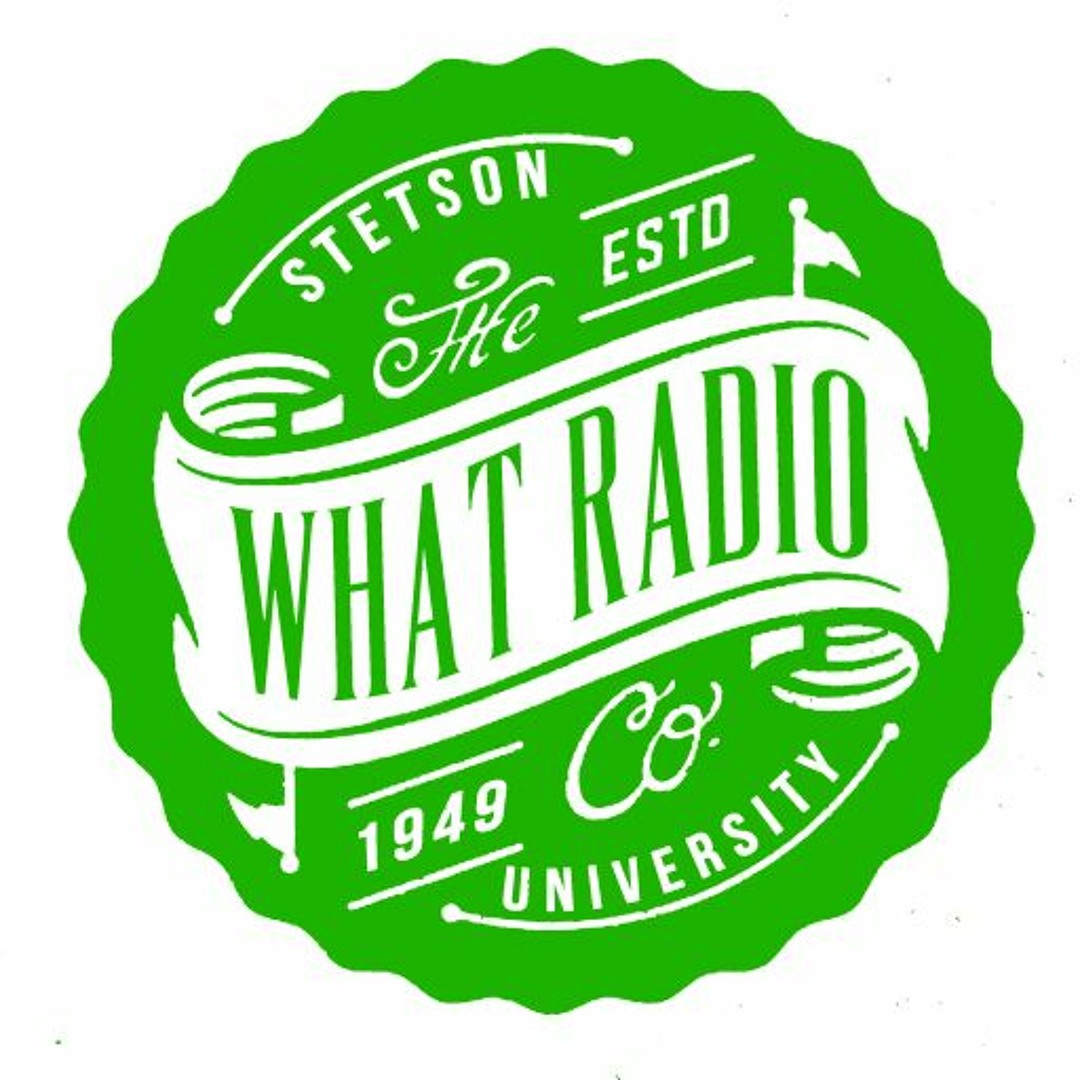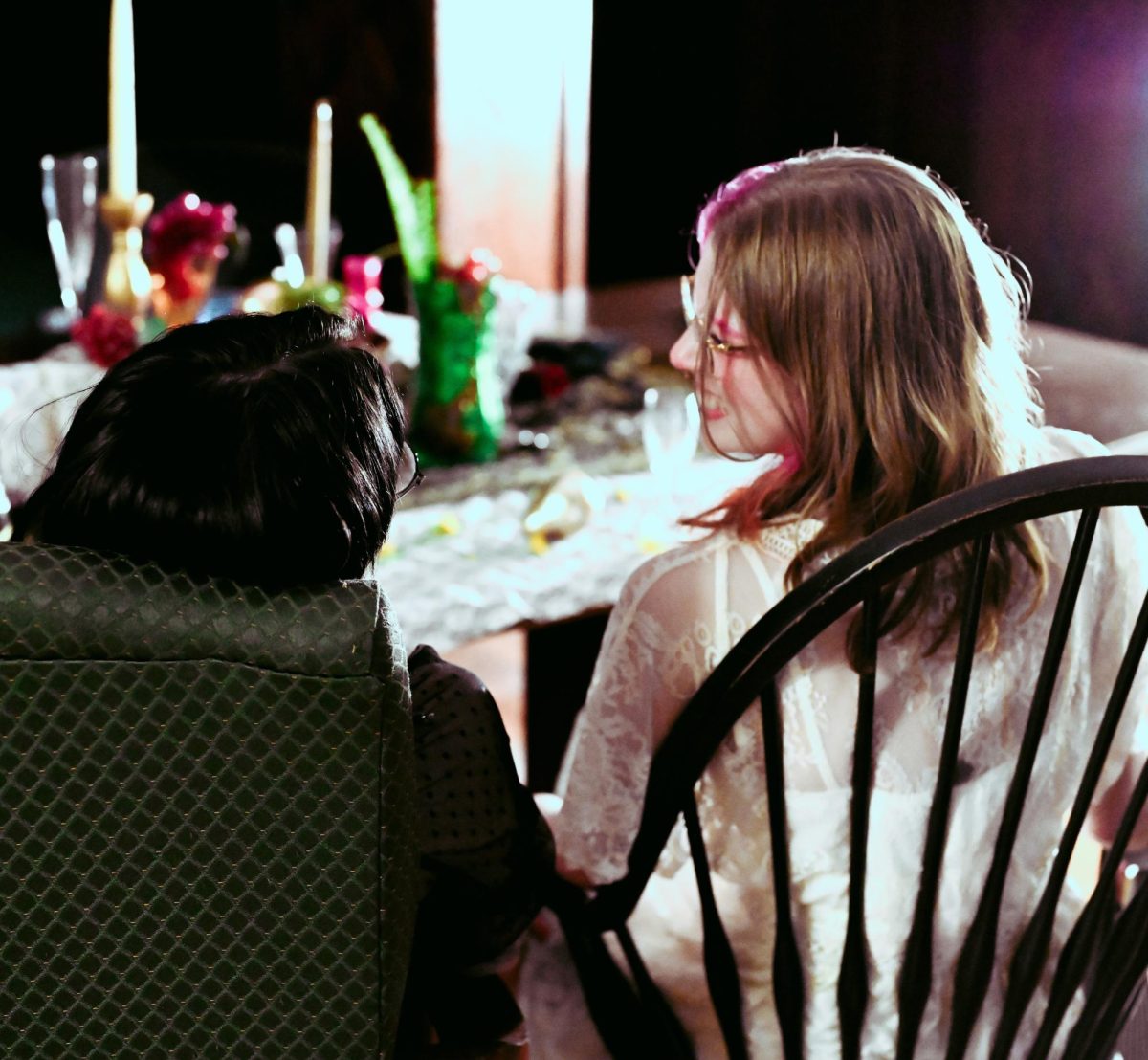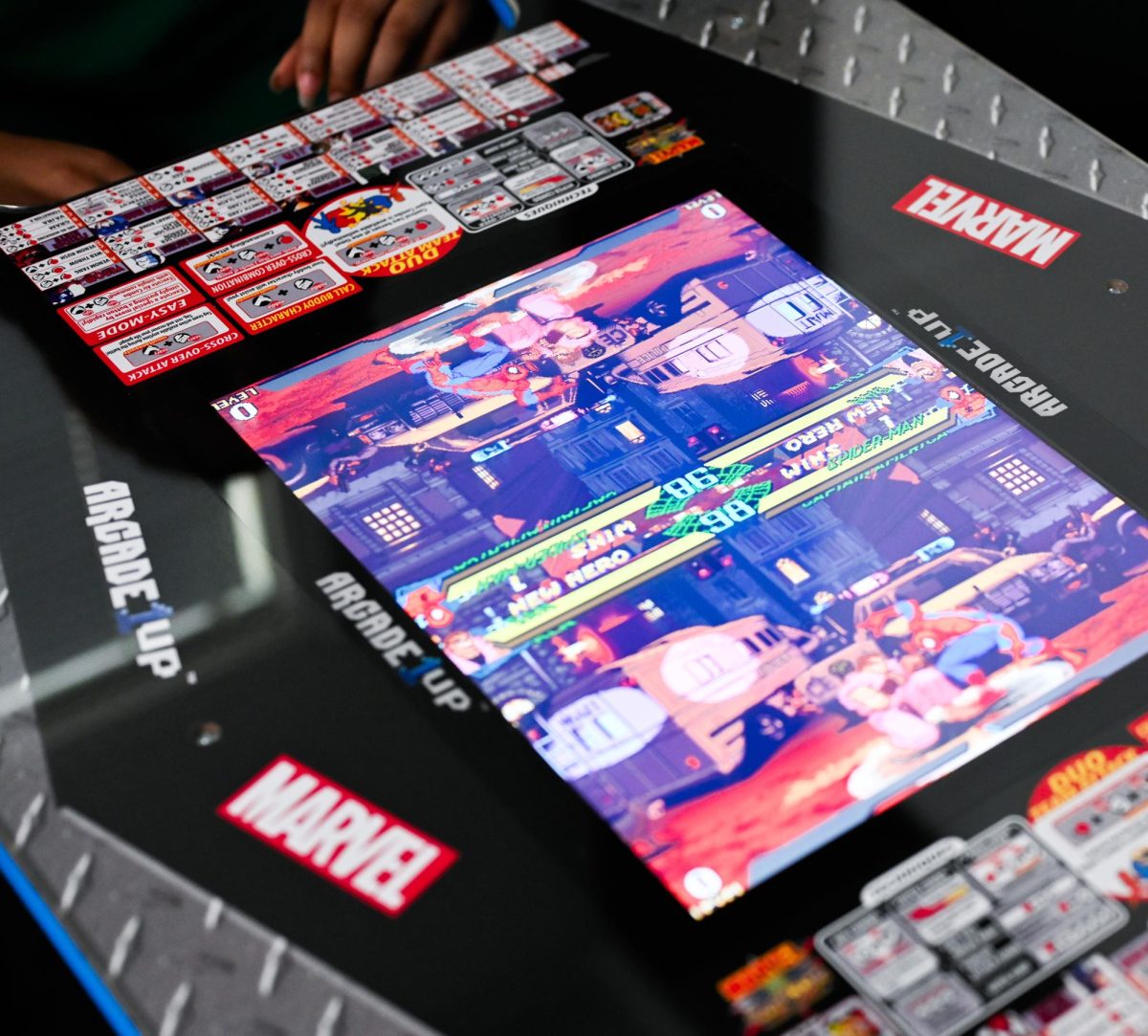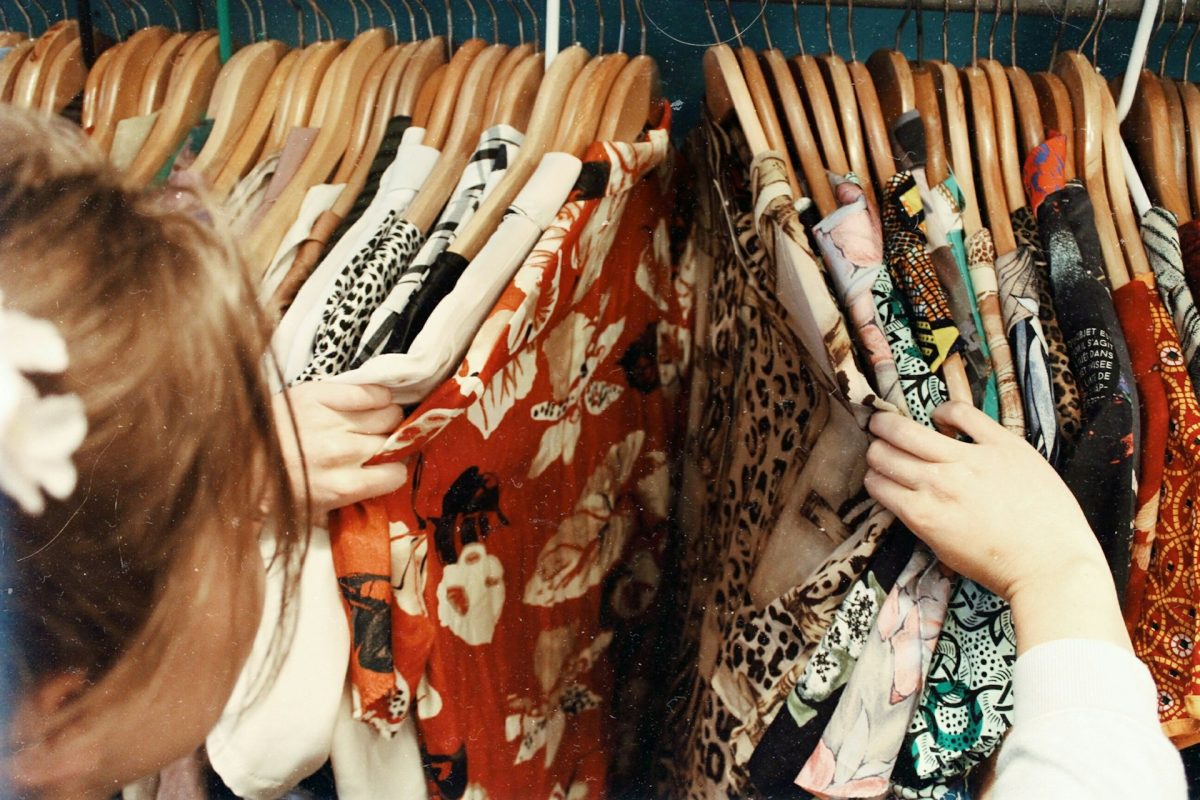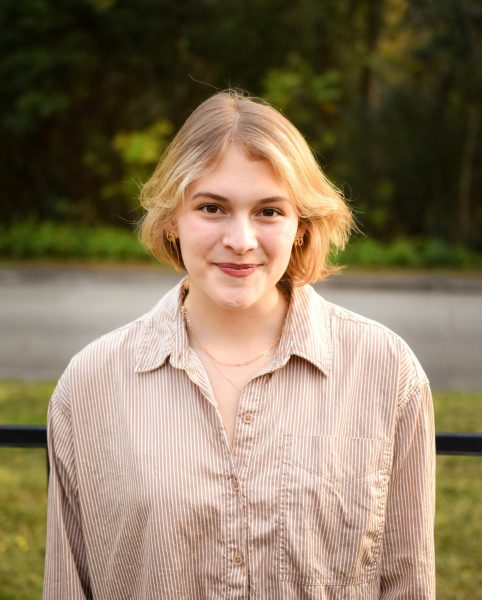Scarcity, sabbaticals, and staff shortages are issues all too common amongst Digital Arts majors and minors alike. Stetson University has been revered for its accomplishments and expert faculty in regard to its Digital Arts department, even being named in the 2022 Princeton Review for Top 50 Game Design Programs. However, over the past few years, that expert faculty has begun to dwindle, as have the courses being offered. As the program expands, it continues to attract more prospective students to the school, which has made the lack of resources, space, and staff all the more evident.
A multitude of things sets the Digital Arts Department apart from other programs at Stetson, although, among students, the most notable difference aren’t the accolades at all, but rather their severe lack of faculty. As of the Fall 2022 semester, the Digital Arts staff has dwindled down to only four professors: Chaz Underriner, Nathan Wolek, Matt Roberts, and Dengke Chen. Although, in the coming semester, Chen’s sabbatical will likely be yet another blow to the already short-staffed department. Several Digital Arts students, especially seniors, have begun to notice the deficit of instructors, many highlighting the issue as one of the greatest weaknesses within the program.
“For me, we are needing more staff or professors, just because if one professor leaves, you don’t have a class, because that is what his job is,” said Ayden Ferrell ‘23. Seniors in the program now not only have to worry about completing their senior projects, but also about losing their mentor and access to someone knowledgeable in their chosen field.
Professor Underriner also commented on his setbacks with the professor problem, noting, “As for professors, we have around 120 to 140 Digital Arts majors, and Digital Arts has only four professors; it is definitely a source of frustration for us. We are petitioning for more positions every year.” But this limited staff is not an isolated issue: it affects every other aspect of the program. “We can hire an adjunct, and though being an adjunct is great and useful to people in different phases of their career, it is highly problematic as a way to staff classes,” Underriner explained. With adjunct professors, the department is alleviating an immediate need, though adjuncts can only do so much in their position. They may stay for a few semesters, but their leave is inevitable. Not to mention, they are most likely teaching general or introductory courses, limiting the adjunct and students to potentially redundant and surface level instruction. Underriner continued, “It is necessary to fill a role, and hiring an adjunct is not going to resolve that long-term.”
Though temporary or traveling faculty can be seen in other programs around campus, the Digital Arts department relies on some of these visiting professors or adjuncts to teach integral courses within the program, making the staff shortage not only a faculty issue, but a course issue as well. Brielle Miller ‘23 added, “ My graphic design class had a professor only there for one semester, so he couldn’t really fully immerse himself in what other classes involve. The syllabus overlapped a lot with the intro classes.”
In terms of the courses themselves, the Digital Arts program falls flat yet again. As Miller mentioned, graphic design is a huge source of frustration amongst students. It is one of the six main concentrations offered for majors and minors, even being highlighted on the Stetson University website as one of the first and most prominent courses in the Digital Arts track. However, the majority of the concentrations are limited to, at best, two classes. Shamar Rush ‘23 said, “There isn’t too much progression with classes. There are only two classes: beginner and advanced. We’re done after that. For the 3D Animation track, there’s only two classes you can take and the same with the visual video classes.”
Many Digital Arts students, especially more so on the visual arts side, are forced to limit their scope of interest to fit with what the school can offer them, which proves extremely difficult for students that wish to pursue further education in one specific field. The Stetson institution as a whole pushes for a well-rounded education, evident in the multiple values courses present for all students. However, when it comes to the arts, students are learning fragments of a complete education. Miller added, “I think I have gotten a nice liberal arts education that will be good for me in the long term, but eventually, if I wanted to become more specialized, I think that I’d have to self teach a lot.” At least within Digital Arts, Stetson prioritizes the concept of “well-roundedness” over being educated extensively in one subject, which results in many students having to seek further instruction elsewhere or wholly on their own. The thought process has good intentions, but these students are losing the opportunity to pursue what they want just because there aren’t enough classes to fully cover it, or again with professors, because there’s no one to teach it.
In addition to how few courses are being offered, the program’s classes are extremely difficult to get into. “I teach digital audio fundamentals every semester and we have to offer a minimum of that twice per semester and still every time we offer it, we have people banging down our door trying to get into class, and that’s just how it is,” Underriner said. As the major continues growing and the staff keeps shrinking, the competition for classes only increases. “I wanted to take the fundamentals class and I couldn’t get in because it was so popular. And that was a class I was just dying to take, because I just wanted to know if I was truly interested. So I switched my major to get into the class,” Miller said.
Many students who may be interested in the program are forced to resort to all different ways to get into the courses. Another student, Briana Mehershahi ‘23, commented, “ I took it completely online which I think isn’t the best way to get into it, because it was over the summer and COVID was still a thing. I definitely think a more hands-on approach is the way to go for these classes.” With major switches being so popular amongst college students, it is not unusual that many students within the Digital Arts program have transferred in either from other schools or other majors. Though, it is the way in which students must manipulate their schedules that stands out.
However, even with the understaffed department and limited resources, the department continues to attract and maintain the interest of the students. The majors and minors that make the program what it is continually attest to how dedicated the faculty is, even if few in number. “I didn’t think I’d be so close to the professors. I switched my major when I was a sophomore and for the last three years, I have been really involved with them,” said Miller. While the department has competitive classes, Digital Arts at Stetson fosters a community of like-minded individuals, backed by professors that want to see their students succeed. “I think the program excels at community,” said Ferrell, adding “If you don’t know how to do something, you can find somebody real quick who can teach you to do it.”
“It’s a friendly environment. We are all peers and are constantly pushing each other,” Mehershahi said. It is evident just how supportive the students are of the program, even with their own qualms. Although the issue remains of simply getting more resources to continue propelling the Digital Arts department on a forward facing trajectory. “I’d like to see the program in the future have more resources, facilities, faculty and support so students can have even more opportunities to do their work in the best way and get out into the world,” said Underriner. As noted, the pitfalls of the department are felt amongst most everyone involved and one of the main ways to combat it is to have more attention drawn to the issues. Elizabeth Skomp, Dean of the College of Arts and Sciences, said, “We would simply need to explore a little more deeply to understand how we could best meet the acute student needs as soon as possible.” There is talk of tentative plans in place to expand the Digital Arts program and accommodate the broadening interest, which could potentially alleviate a lot of the pressures of the major and accessibility issues.“I think that the most meaningful step that we can take in the short term is to open up a second lab,” continued Skomp, adding that “Stetson is a small private institution that is tuition driven, tuition dependent even, we certainly always have to take resource constraints into account in any particular circumstance.”
And although the Digital Arts department may not be unique in its need for more resources, it does not make the demand any less important. In regard to resources and funding, Matt Roberts, a Digital Arts professor, said, “Sure, we receive 15 million [in funding], but not quite. We are not really getting full access to that 15 million. It is only for scholarships, so we can’t really use it for things we need like facilities. Lots of red tape.”
With so many fields the program is attempting to cover, a large sum of the students are vying for better tools and better access. “The program just doesn’t get enough. I’m taking digital photography and all the cameras are rented from the library or donations; they are not new. That’s why I had to just buy my own,” said Ferrell. Monetary and access issues span each of the concentrations, though. If it is not a camera, it is an iPad or a recorder. Though the department is receiving funding, and scholarships help several individuals, the longevity of the program requires resources that are not easily attained and affordable for students. “At Stetson, you can go to the labs and have access to most things, but they don’t allow you to actually have the program on your own computer, unless you pay for it yourself. And I can’t afford that,” said Miller.
What’s also interesting to note, however, is the disparity amongst the different concentrations within the Digital Arts department in regard to overall accessibility. Though the students themselves generally view the program as a supportive community, the resources afforded to certain sections of the department are telling. Many music and audio students give overwhelmingly positive feedback, especially in terms of resources, whereas there seems to be a lack within so many other concentrations. “The stuff we have access to is really wonderful, like the DAWs [digital audio workstations]. In Electronic Music and Sound Design we actually get to research and use different types of technology, like this brand new thing called Audio Stellar,” said Mehershahi. But on the contrary, other department students, especially those in graphic design and photography, have noted that their resources are more worn and in need of updating. Also notable is two of the Digital Arts professors specialize either fully or somewhat in audio, which gives reason for more resources and renovations being pushed for the audio concentrations. Again, much of the issue can potentially stem from the understaffed department as a whole, given there are no permanent or full-time visual Digital Arts professors advocating for equipment as of 2022.
Nonetheless, the Digital Arts Department may be lacking in multiple ways, but it is clear that the people are the lifeblood of the program: the professors, students and relationships shaped between them. Based on general opinion, the department has the potential to continue to grow and excel, but needs the support of more faculty, more resources, and more access. Skomp said, “I do think that there’s an incredibly promising future for the program, especially if we can augment it with some additional physical resources.” The most important task for the department now is a matter of fulfilling the “if.”
Top Students Quotes
Briana Mehershahi ‘23
- Digital Arts Major, Music, Music Technology Minor
- “There is not a specific course they have here where you can claim my concentration, but I’ve taken all the audio.”
- “I actually didn’t start as a Digital Arts major or even came here with the intention to do that at all.”
- I had some people not necessarily agreeing with my switch.
- It was a pretty smooth transition switching majors and getting into classes. I took it completely online which I think isn’t the best way to get into it, because it was over the summer and COVID was still a thing. I definitely think more hands-on is the way to go for these classes. I can see students not having access to a lot of the resources.
- I used to be a music tech major which aligned with a lot of classes I have taken, but being combined with Digital Arts comes with “do you draw?” Which can be kind of annoying. I wasn’t sure how I felt about that.
- I honestly feel like it’s a friendly environment; we are all peers and are pushing each other.
- It is such a nice learning environment and all the professors I’ve worked with have been phenomenal. They are all experts in their fields for sure.
- The stuff we have access to is really wonderful for a school, like the DAWs (digital audio workstations). They have the whole Adobe suite and everything like that and the stuff in the studio is so nice.
- I know we are kind of working towards updating some things in the studio.
- In electronic music and sound design we actually get to research and use different types of technology, like this brand new thing called Audio Stellar.
- The practicality of things is so important to me and in this field you can pursue things.
Shamar Rush ‘23
- Digital Arts Major, Africana Studies Minor
- I actually didn’t start out as a Digital Arts major.
- I liked the small class sizes when coming to Stetson. A lot of the professors helped me out with my personal projects, and I got a lot of connections through them, too.
- There isn’t too much progression with classes, though. There is only two classes: beginner and advanced. We’re done after that.
- For the 3D Animation track, there’s only two classes you can take and the same with the visual video classes.
- As for fixing the Digital Arts program, I wouldn’t say digitals arts by itself, but maybe just the arts department in general. Pay more attention to it.
Brielle Miller ‘23
- Digital Arts Major, Studio Art Minor
- Concentrated my studies in digital arts on 3D modeling and animation, then photography, but I have a special interest in graphic design.
- I didn’t think I ‘d be so close to the professors. I switched my major when I was a Sophomore and the last three years, I have been really involved with two professors mainly.
- I wanted to take the fundamentals class and I couldn’t get in because it was so popular. And that was a class I was just dying to take because I just wanted to know if I was truly interested. So I switched my major to get into the class.
- It is kind of hard to get into the classes sometimes that I want. Especially the fundamentals classes, the first two required for major or minor.
- I don’t regret choosing Stetson, but if I had known that I would have gone into digital arts before I came, I probably would have tried to go into a more art focused school.
- On summer breaks having to remember and reintroduce certain things to myself and self-teach in a way was pretty difficult. But also just having access. At Stetson, you can go to the labs and have access to most things, but they dont allow you to actually have the program on your own computer, unless you pay for it yourself. And I can’t afford that.
- In terms of it being a major, it is a pretty well-rounded major.
- But the concentrations are kind of limited, for example I’m interested in graphic design and they only have one class on it.
- I think I have gotten a nice liberal arts education that will be good for me in the long term, but eventually, if I wanted to become more specialized, I think that I’d have to self teach a lot.
- My graphic design class had a professor only there for one semester, so he couldn’t really fully immerse himself in what other classes involve. The syllabus overlapped a lot with the intro classes.
- I know we are just understaffed in the entire department. I think that there should be more professors, but the professors that I have had really put in the extra effort. They really do want you to learn the material and go the extra mile.
- I am doing my senior project right now and Chen is my mentor, so I’ll have to get that switched.
Ayden Ferrell ‘23
- Digital Arts and Pre-engineering major
- I think the program excels at community and if you don’t know how to do something, you can find somebody real quick who can teach you to do it.
- I went from drawing to everything digital now.
- It gives you a lot of options because when I talk to people, I have the options to be able to do this, this, and this.
- The only weakness for me is needing more staff or professors. Just because if one professor leaves, you don’t have a class because that is what his job was.
- I would say the program just doesn’t get enough, because I mean taking digital photography, all the cameras are rented from the library or donations; they are not new. That’s why I had to just buy my own.
Top Faculty Quotes
Chaz Underriner
- We need more resources. We are in conversation with the College of Arts and Sciences.
- Improving our facilities for digital arts for everything that we do. For example having a full recording studio. Just having more space and more.
- It’s space. It’s the equipment. You know, professional level equipment to do the stuff that we’re teaching and then support in terms of staff.
- I understand some positive developments happening there behind the scenes that aren’t official yet.
- Of course having more funding available for faculty so that we can be better and more attentive advisors to all of our students and so that we can be well equipped to lead the program.
- You got to put the resources in to get them out. Whatever resources put into the program will almost immediately bear fruit, because the skills we teach are so high in demand.
- As for professors, we have around 120, 140 digital arts majors and digital arts has four professors; it is definitely a source of frustration for us. We are petitioning for more positions every year.
- Our hope is that we can hire somebody to do film video so that Chen can be freed up to do more animation style stuff and then we could potentially hire a person to teach graphic design who actually specializes in that.
- To give more faculty positions to our program is what we are advocating for.
- We can hire an adjunct, and though being an adjunct is great and useful to people in different phases of their career, it is highly problematic as a way to staff classes. It is necessary to fill a role and hiring an adjunct is not going to resolve that long term.
- I teach digital audio fundamentals every semester and we have to offer a minimum of that twice per semester and still every time we offer it, we have people banging down our door trying to get into class and that’s just how it is.
- Ideally, I think the sequence structure would stay the same, but there would be more sequences offered more of the time. More variety and more coverage. Then people could do senior projects on different projects and have more support for that.
- I wrote a new class and still haven’t been able to teach the whole sequence since I’ve written it. And I think I wrote it three years ago now.
- In this case, I was going to get to teach it this year, but then we had an adjunct who was going to teach my audio recording production sequence who got a full time job somewhere else. So then we had to decide who is going to teach what and we had to cut stuff. I had to choose one or the other.
- I’d like to see the program in the future have more resources, facilities, faculty and support so students can have even more opportunities to make their work in the best way and get out into the world.
Matthew Roberts
- The biggest issue is facilities. It is always facilities. Space, because with the amount of students we have and the facilities just don’t match.
- We are kind of all over campus and so it is very hard. We need a centralized location and better facilities, like labs. We are a big program with very little.
- They are always looking for private donors and other things to fund a building so we can renovate it and house all of creative arts. So it is a big thing. It is always about the funding.
- Sure we receive 15 million, but not quite. We are not really getting full access to that 15 million . It is only for scholarships, so we can’t really use it for things we need like facilities. Lots of red tape.
- This year we have 30 something seniors which is a really big class for all of us to manage.
- We really need to have at least two more effective full time faculty.
- It is easier to work at smaller colleges, although there’s facilities and funding that you don’t have issue with at bigger universities.
Elizabeth Skomp
- So the creative arts department is actually going to be hiring a new visiting assistant professor in digital arts to start in fall 2023.
- And we’ll expect to start the search for a new faculty member early in the spring semester.
- We would expect to make-up those courses through the hiring of some professionals in the fields.
- I would say at the very top of my priority list is opening up a second Digital Arts Lab on campus.
- We would need simply to explore a little more deeply to understand how we could best meet the acute student needs as soon as possible.
- Stetson is a small private institution that is tuition driven, tuition dependent, we certainly always have to take resource constraints into account in any particular circumstance. In that regard, I don’t think that digital arts is unique.
- I think that the most meaningful step that we can take in the short term is the open up a second lab.
- I believe we are up to nine, if not ten separate locations for creative arts.
- But I do think that there’s an incredibly promising future for the program, especially if we can augment it with some additional physical resources.


